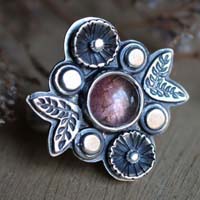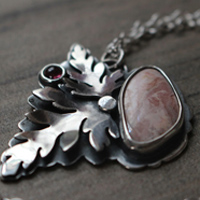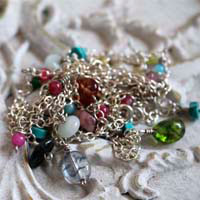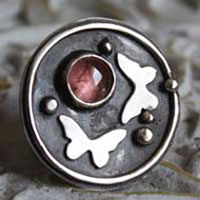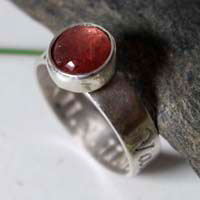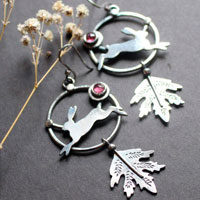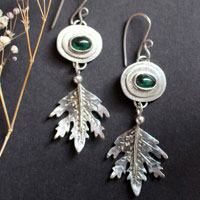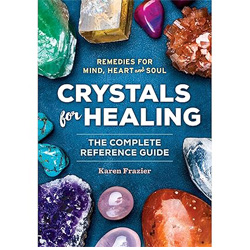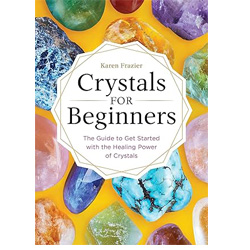- Jewelry
- Inspiration
- Our imagination
- Birthstones
- Celebrating with Eternal Flowers
- Druids and druidesses
- Flower meanings
- History, archeology jewelry
- History and healing properties of metals
- History and healing properties of stone
- Illumination jewelry
- Japanese symbols
- Maya calendar jewelry
- Stone color symbolism
- Stones catalogue
- Wedding anniversaries
- Searches a theme on the site
- Good Deals
- Paintings
- About
- Contact
JEWELRY
- Anklet
- Bracelets
- Brooches
- Cufflinks
- Earrings
- Pendants & Necklaces
- Rings
- Draw your jewelry
- How to clean your jewel
- Metal we used
INSPIRATION
- Our imagination
- Birthstones
- Celebrating with Eternal Flowers
- Druids and druidesses
- Flower meanings
- History, archeology jewelry
- History and healing properties of metals
- History and healing properties stones
- Illumination jewelry
- Japanese symbols
- Maya calendar jewelry
- Stone color symbolism
- Stones Catalogue
- Wedding anniversaries
- Searches a theme on the site
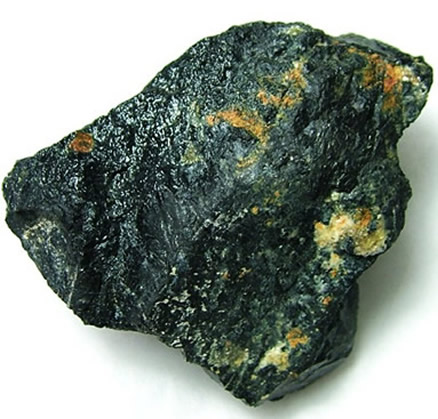
Tourmaline: history, healing properties and lithotherapy
Tourmaline properties

The term "tourmaline" actually refers to a group of minerals belonging to the complex silicate family, specifically cyclosilicates. This crystal is distinguished by its unique crystalline structure, composed of elongated prisms with a typically triangular cross-section featuring slightly curved faces. This distinctive geometry gives it an immediately recognizable appearance.
The name "tourmaline" originates from the Sinhalese language (spoken in Sri Lanka), where thuramali or thoramalli means "stone of mixed colors." This name perfectly reflects the extraordinary chromatic diversity of this mineral, which can exhibit almost every hue in the visible spectrum:
- Black tourmaline (schorl): The most common variety, rich in iron, opaque, and highly durable.
- Pink to red tourmaline (rubellite): Its color is due to the presence of manganese.
- Green tourmaline (verdelite): Its hue comes from traces of chromium or vanadium.
- Blue tourmaline (indicolite): A rare and highly sought-after variety.
- Yellow tourmaline (dravite): Typically rich in magnesium.
- Colorless tourmaline (achroite): Extremely rare.
- Bicolored or multicolored tourmaline: Some stones display multiple colors, such as watermelon tourmaline, which has a pink core surrounded by a green border.
The color of tourmaline depends on the chemical elements present during its formation. Natural irradiation from gamma rays emitted by granite can also modify or intensify certain shades, particularly pink and red hues.
Tourmaline possesses remarkable physical characteristics, making it a prized stone in both jewelry and mineral collections. With a hardness of 7 to 7.5 on the Mohs scale, it is relatively resistant to scratches and everyday wear. This durability allows it to be set in rings, pendants, or bracelets without excessive risk of damage. Its density ranges from 3.0 to 3.2, depending on its chemical composition. Some varieties, richer in iron or manganese, may be slightly heavier than others.
A distinctive feature of tourmaline is its pronounced pleochroism, an optical phenomenon that causes it to display different color intensities depending on the viewing angle and light source. A blue tourmaline, for example, may appear darker, lighter, or even slightly greenish from different angles. This property is highly valued in gemology, as it gives each stone a unique depth and richness of color.
Tourmaline has a conchoidal to irregular fracture, meaning it lacks distinct cleavage, unlike stones such as topaz or fluorite. This makes it more resistant to breakage upon impact, though it should still be handled carefully to prevent internal fractures.
One of tourmaline’s most fascinating characteristics is its pyroelectric and piezoelectric properties:
- Pyroelectricity: When heated, it generates opposite electric charges at its ends, attracting dust and small lightweight objects.
- Piezoelectricity: When subjected to pressure, it produces an electric current, a property it shares with quartz.
These electromagnetic properties have led to its use in measuring instruments, pressure sensors, and even modern technological applications for energy conversion.
Thanks to its beauty and numerous properties, tourmaline is a gemstone that is both aesthetically captivating and functionally valuable, finding applications in both jewelry and science.
Mines: Afghanistan, Australia, Brazil, Russia, Thailand, Angola, Burma, Tanzania, Nigeria, Kenya, Madagascar, Malawi, Mozambique, India, Italy, Elbe Island, the USA.
History, legends and beliefs about tourmaline
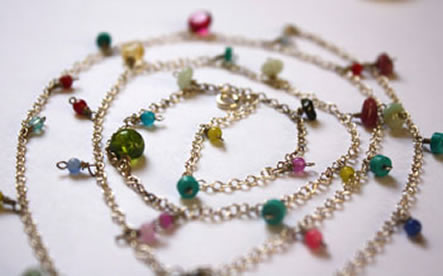
In Sri Lanka, where tourmaline has been mined since antiquity, a legend tells of this semi-precious stone falling from the sky. During its descent, it is said to have passed through a rainbow, imbuing it with its countless hues. This celestial journey is believed to be the reason why tourmaline is nicknamed "the stone of a thousand colors." This belief reflects the remarkable chromatic diversity of tourmaline, which can range from soft pink to deep green, as well as shades of blue, yellow, and even black.
Tourmaline appears in ancient writings, though under different names, often mistaken for more renowned gemstones. One of the earliest possible references to tourmaline is found in the works of Theophrastus (322–288 BC), a disciple of Aristotle and author of On Stones. He describes a gem called lyngourion, which could attract small, lightweight objects such as straw or wood shavings—a property now recognized as linked to tourmaline’s pyroelectric nature. This ability to generate an electric charge when heated or rubbed intrigued ancient civilizations and gave rise to numerous superstitions.
During the Middle Ages and the Renaissance, tourmaline remained largely unknown as a distinct gemstone. It was often mistaken for rubies, sapphires, or emeralds due to its rich spectrum of colors. Only with increased trade between Europe and Asia did tourmaline begin to draw more attention.
In the 16th century, Spanish conquistadors discovered deposits of green tourmaline in Brazil, believing they had found a new source of emeralds. This confusion sparked a rush to these stones, as explorers hoped to rival Colombia’s emerald mines. It was only with the advent of modern mineralogical analysis that this misidentification was corrected.
By the 17th century, tourmaline was being used in Asia and Europe more for practical purposes than decorative ones. In China, artisans carved imperial seals, brooches, and amulets from this stone. Chinese beliefs attributed to it the power to stabilize the body’s energy and harmonize emotions. The Qing emperors particularly valued pink and red tourmalines, considering them stones of prosperity and happiness.
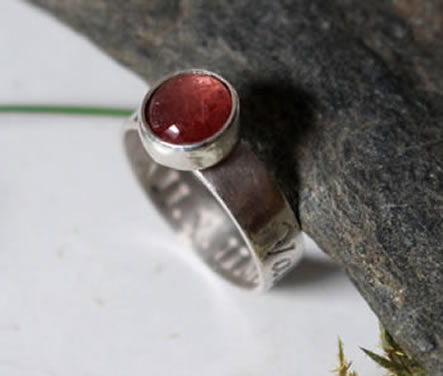
One of the most remarkable aspects of tourmaline is its pyroelectric property: when heated, it develops an electric charge that allows it to attract light particles such as dust or ashes. This phenomenon began to intrigue European scientists in the 18th century.
Dutch merchants trading with Asia brought back stones they called aschentrekers (meaning "ash drawers") because these gems appeared to attract pipe ashes when warmed. At the time, they did not yet recognize them as tourmalines, but the phenomenon sparked the curiosity of naturalists.
In 1756, Swedish scientist Carl von Linné began studying these stones and confirmed their distinct nature. It was not until the 19th century that mineralogists were able to clearly identify tourmaline as a distinct group of minerals with a complex crystalline structure.
The history of tourmaline is marked by numerous confusions with other precious stones. Several famous gemstones were long mistaken for rubies or sapphires before being identified as tourmalines. For example, the Russian crown jewels of the 17th century contain several red tourmalines that were believed to be rubies for centuries. This confusion is due to the intense color of certain varieties, particularly rubellite tourmaline, whose hue can rival the finest Burmese rubies.
In the United States, California tourmalines experienced a significant rise in demand from the late 19th century, driven by growing interest from imperial China.
One of the most passionate historical figures regarding tourmaline was Empress Cixi (Tseu-Hi), who ruled China from 1861 to 1908. She had an unwavering admiration for this stone, especially pink and red tourmalines sourced from California mines. Under her influence, the Chinese imperial court adopted tourmaline as a gemstone of prestige and adornment.
Cixi possessed an impressive collection of jewelry and carved objects made from tourmaline. Her jewelry featured pink tourmaline cabochons set in gold and pearls. She also commissioned brooches, combs, seals, and even sculpted pillows from this stone. When she passed away in 1908, her body was laid to rest on a pink tourmaline pillow, a testament to her profound attachment to this gem.
Today, tourmaline remains highly sought after, both for its aesthetic qualities and its fascinating physical properties. In 1912, it was officially recognized as the birthstone for October, sharing this honor with opal. It is also associated with the 52nd wedding anniversary, symbolizing the stability and energy of a long-lasting relationship.
Healing properties and benefits of tourmaline
Au fil de la longue histoire de humankind, tourmaline has been attributed with various properties, virtues, and healing-related beliefs. The information presented here is shared from a cultural and historical perspective, with the aim of illustrating the symbolic relationship that has gradually developed between this stone and different civilizations over the centuries. As with the previous examples, these elements form part of a scientific and historical approach. They do not constitute medical or therapeutic advice and do not reflect personal beliefs.
- Tourmaline is often described as having a stabilizing influence on the nervous system. In traditional interpretations, it is associated with a calming effect, helping to reduce mental agitation and emotional tension. By symbolically absorbing negative energies, it is thought to assist in easing excessive thoughts and anxiety, fostering a sense of calm and inner serenity.
- Tourmaline is frequently regarded as a grounding stone, helping to refocus the mind and harmonize the body’s energies. It is traditionally perceived as forming a symbolic energetic barrier against negative influences and external disturbances, which explains its longstanding association with emotional stability and protective qualities.
- Due to its traditionally attributed ability to stimulate the circulation of bodily fluids, tourmaline has sometimes been associated with the elimination of toxins. In this symbolic framework, it is believed to support the lymphatic system and contribute to the purification of the blood, promoting the overall balance of the body and the proper functioning of organs involved in elimination, such as the liver and kidneys.
- Some studies and modern interpretations suggest that tourmaline may emit far-infrared radiation, a form of energy thought to have a beneficial influence on microcirculation. Through this association, tourmaline is believed to support better oxygen delivery to cells, aid muscle recovery, reduce the sensation of heavy legs, and symbolically relieve certain circulatory discomforts such as varicose veins.
- Tourmaline is also sometimes mentioned in relation to digestive comfort. Within traditional energetic interpretations, it is believed to help relieve bloating, abdominal discomfort, and gastric unease by supporting the balance of the solar plexus, a center often symbolically linked to digestive functions.
- The mineral composition of tourmaline includes iron, magnesium, and other trace elements, which has led to its association with bone strength. In lithotherapy traditions, it has been used symbolically to help prevent demineralization and to support individuals experiencing bone fragility, including conditions related to osteoporosis.
- Tourmaline is sometimes associated with the regulation of hormonal balance. By symbolically stimulating certain glands of the endocrine system, it is believed to help ease the effects of premenstrual discomfort, support hormonal balance during menopause, and contribute to overall well-being.
- By supporting detoxification processes and improving lymphatic circulation in traditional interpretations, tourmaline is also associated with relief from water retention. It is believed to help reduce swelling and edema, particularly in the legs.
- Tourmaline is frequently linked to renewed energy and vitality. Through its symbolic association with improved blood circulation, it is thought to support energetic balance and may also be connected to enhanced libido and sexual vitality.
- Tourmaline is often mentioned for its traditionally attributed analgesic qualities. It is believed to help ease muscular, joint, and chronic pain by symbolically reducing inflammation. For this reason, it has been associated with relief from back pain, arthritic discomfort, and muscular tension.
- Although there is no scientific evidence confirming its effectiveness in cancer treatment, some people use tourmaline as a complementary support to help ease discomfort associated with the illness or its treatments, based on its traditionally described calming and supportive qualities.
- Tourmaline is also used in certain cosmetic formulations for its regenerative associations. It is believed to stimulate blood circulation in the skin and support the elimination of impurities, contributing to a brighter complexion and helping to soothe skin conditions such as acne, eczema, and psoriasis.
- One property frequently attributed to tourmaline is its ability to absorb electromagnetic waves emitted by electronic devices such as mobile phones, computers, and Wi-Fi systems. For this reason, some people place tourmaline near their workspaces as a symbolic means of protection against the perceived effects of these waves on well-being.
 Please note that all healing properties attributed to stones come from ancient traditions and various cultural sources. This information is provided for informational purposes only and does not constitute medical advice. In case of any health concerns, it is recommended to consult a qualified professional.
Please note that all healing properties attributed to stones come from ancient traditions and various cultural sources. This information is provided for informational purposes only and does not constitute medical advice. In case of any health concerns, it is recommended to consult a qualified professional.
Tourmaline jewelry samples
To learn more about litotherapy, we recommend you the following books:

